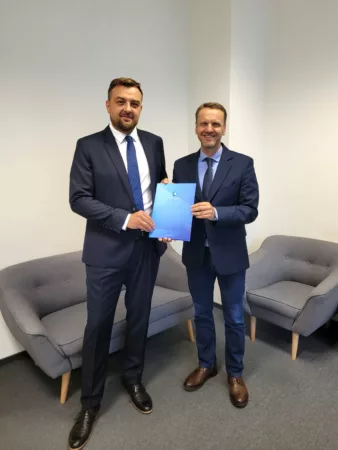Prelux – Innovative Diagnostic System Enters Clinical Trial Phase
Artificial Intelligence in the Service of Children’s Health
Pentacomp is developing Prelux – a modern AI-based system that supports doctors in diagnosing congenital hip dysplasia (DDH) in infants and selecting the optimal treatment pathway. The project has reached an important milestone – clinical trials have begun to confirm the solution’s effectiveness and safety in medical practice.
Collaboration with Pure Clinical
The trials are being conducted by Pure Clinical, a company specializing in projects of this type. As Adam Sobantka, CEO of Pure Clinical, emphasizes: “Prelux combines the latest technologies with a real clinical need. This is the first study of its kind in Poland for software of this type. We will ensure the process is fully rigorous and safe for patients.”
A Breakthrough in DDH Diagnostics
Prelux analyzes ultrasound images in real time and compares them with a database of thousands of real examinations. It uses the Graf method – a widely recognized diagnostic standard – to develop diagnostic recommendations. This allows the system to accurately determine the severity of abnormalities, reduces the time needed for a precise diagnosis, and facilitates the selection of appropriate therapy.
Early detection of hip dysplasia is crucial for a child’s healthy development – it helps prevent disability and costly surgeries in the future.
Pentacomp – New Horizons of Development
“Starting clinical trials confirms that Prelux is in a decisive phase of development. We are moving to a new level – expanding into medical devices and creating products that truly improve quality of life. This brings immense satisfaction,” says Dariusz Nowakowski, CEO of Pentacomp.
The clinical trials are conducted as part of the project “Development of an IT system based on artificial intelligence algorithms supporting the diagnosis of hip dysplasia in infants and the process of choosing the optimal therapeutic path,” funded by the state budget under the Medical Research Agency competition.

